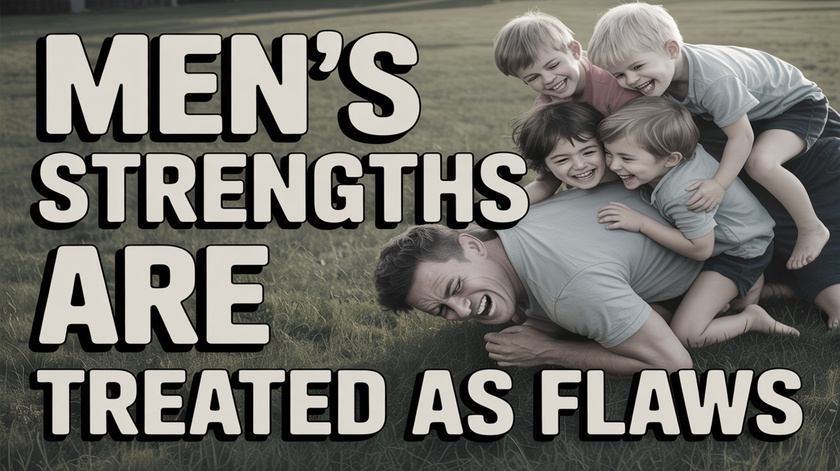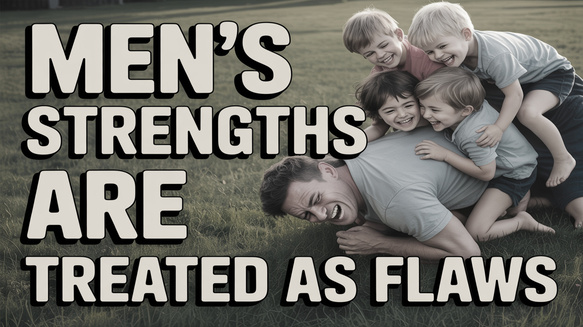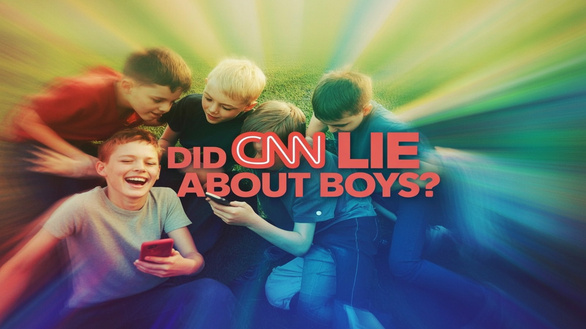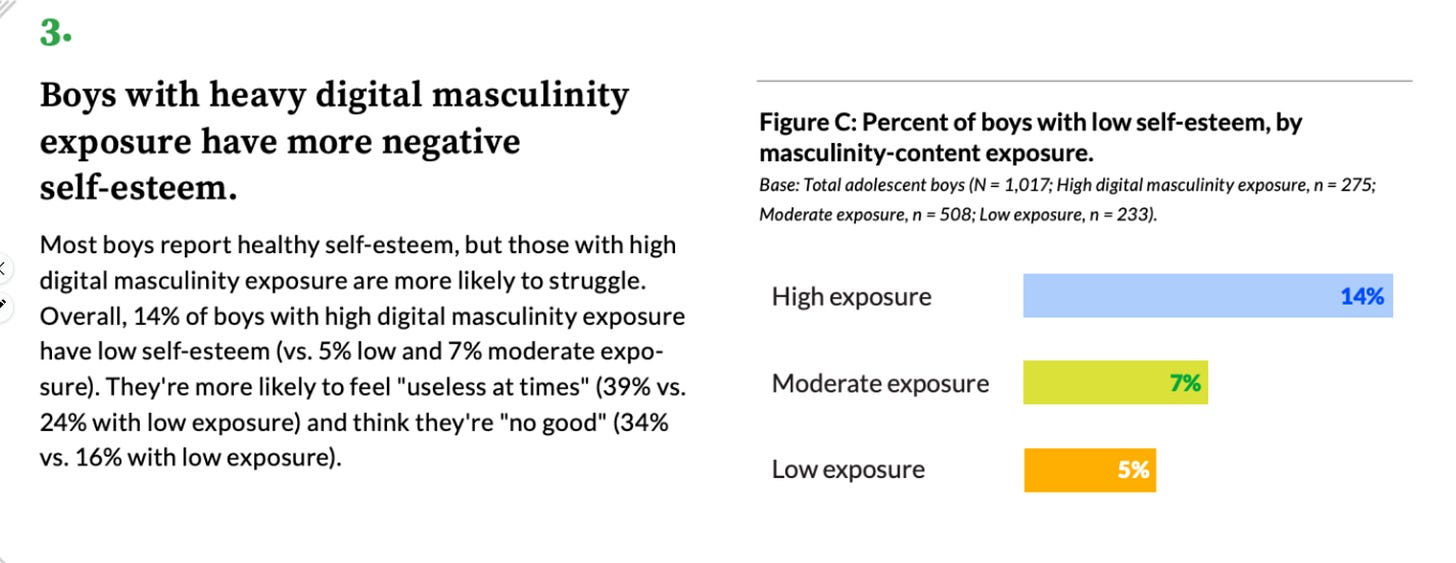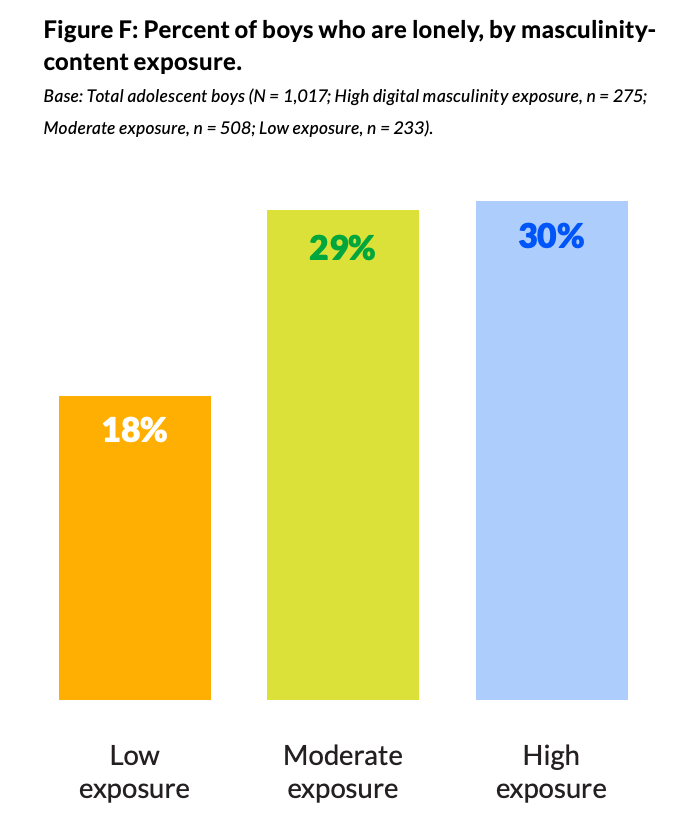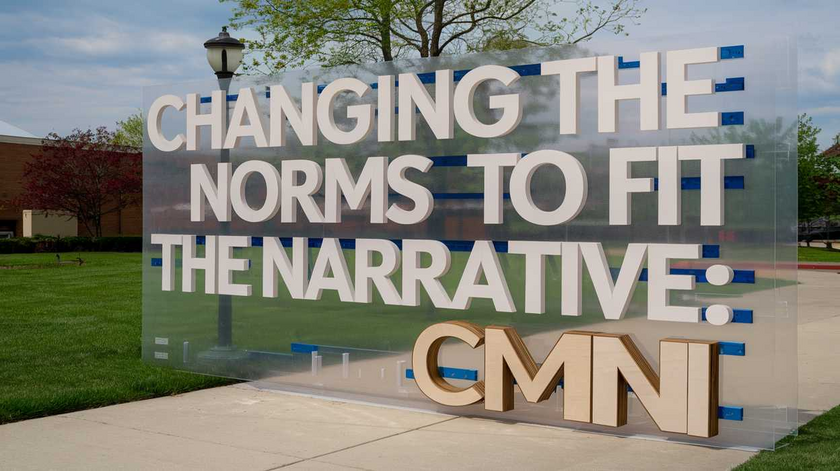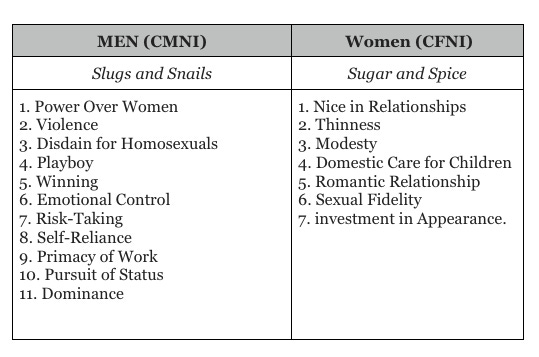
A friend emailed me a link a couple of months ago to an article from Great Britain about teen violence. The friend was worried that the article was biased against boys. Here’s how it started:
- Teenage boys were urged not to violently abuse their girlfriends in a new Government campaign launched today.
- TV, radio, internet and poster ads will target young males aged 13 to 18 in an attempt to show the consequences of abusive relationships. It is part of a wider effort by ministers to cut domestic violence against both women and younger girls.
- Research published last year by the NSPCC found a quarter of teenage girls said they had been physically abused by their boyfriends.
- One in six said they had been pressured into sex and one in three said they had gone further sexually than they had wanted to.
I was a bit taken back by the article considering the recent research on teen violence which has been finding that relationship violence in teens is fairly symmetrical with both boys and girls being perpetrators and victims. This article was offering a very different perspective from the studies I had been seeing. It was clearly assuming that the girls were the primary victims and the boys the primary perpetrators which reflects an archaic and outdated stereotype about domestic violence. It made me wonder exactly what was happening. I read several more articles online about the ad campaign mentioned in the first article and was shocked to see that the focus of the campaign was indeed solely to help girls and to “teach” boys about not abusing their girlfriends.
In each of the articles there was a reference to the research findings that drove the ad campaign. I decided to go back to the source and see what the original research had found.
The original study was sponsored by the National Society for the Prevention of Cruelty to Children (NSPCC) of Great Britain and was in two parts. The first part was the “full report” and was a detailed 209 page research report explaining methodology, results, implications and conclusions. The next was the Executive Summary which was a 10 page summation of the findings of the full report. It was a quick read meant to give people the essence of the larger document. I read through the “full report” and then the executive summary. It was striking to me that the data in the full report actually showed that boys were victims of teen violence. The original news article I had read had mentioned that the research had found that 25% of girls said they had been physically abused by their boyfriends. What the news article omitted saying was that the same research had also found that 18% of boys had said that they had been physically abused by their girlfriends. This meant that this research found that almost half of the victims of teen relationship violence were boys! Somehow this important fact had been omitted from the news report.
There were plenty of other headlines that could have been drawn from the data of the full report that showed the boys to have been victims and the girls perpetrators but they were nowhere to be seen in any of the news articles. Here are a couple of examples of headlines that could be written from the data of the full report:
- 25% of those reporting physically forcing their partners into having sexual intercourse were girls – Table 15 page 82 full report
- Nearly three times as many girls reported using SEVERE violence in relationships. table 11 – page 75 full report
- Over three times as many girls reported using partner violence in their relationships table 10 page 74 full report
- Over 1/3 of those reporting being pressured into kissing, touching or something else were boys. table 6 page 66 full report–
- Nearly half (42%) of the victims of teen relationship violence were boys Table 3 page 44 full report
- Nearly one third of the victims of severe violence were boys Table 4 page 45 full report
- Twice as many girls reported physically forcing their partners into “kissing, touching, or something else” more than a few times. Table 13 page 82 full report
This is just a sampling of the sorts of findings in the full report. It is obvious that their survey clearly indicated that teen relationship violence was not gender based and both the victims and the perpetrators were both boys and girls. However, what I found after reading both the full report and the executive summary was that the full report had data that showed boys to be victims and girls to be perpetrators but the executive summary seemed to have considerably less information about male victims and female perpetrators. In fact the executive summary seemed to focus more on female victims and male perpetrators.
I found myself wondering how this transition could take place. Boys were shown to be victims in the original study, often not in as great a number as the girls but victims all the same. Generally the boys comprised about 25-42% of the victims. Certainly not the majority but also not a small number that could be ignored. But ignore them they did!
The NSPCC introduced this research to the media via a press release. We can see the same tendency of moving away from focusing on boys when looking at the words in the press release. What started in the full report as an apparently egalitarian look into teen relationship violence progressively looked less so in the Executive Summary and now with the press release it looks to have moved one more step towards focusing solely on girls. Here’s the opening of the press release. Note the focus on “girls only” in both the headline and the first paragraphs:
Teen girls abused by boyfriends warns NSPCC
Press releases
01 September 2009
A third of teenage girls in a relationship suffer unwanted sexual acts and a quarter physical violence, reveals new research(1) launched today (01 September 2009) by the NSPCC(2) and the University of Bristol(3).
The survey of 13 to 17-year-olds found that nearly nine out of ten girls had been in an intimate relationship. Of these, one in six said they had been pressured into sexual intercourse and 1 in 16 said they had been raped. Others had been pressured or forced to kiss or sexually touch.
A quarter of girls had suffered physical violence such as being slapped, punched, or beaten by their boyfriends.
Girls are highlighted repeatedly in the press release. If one only read the press release you might assume that the boys were incidental and that the girls were clearly the identified victims of teen relationship violence. The boys actually did get mentioned in one paragraph (one out of 18 paragraphs, eleven of which were about girls). Here it is:
Nearly nine out of ten boys also said they had been in a relationship. A smaller number reported pressure or violence from girls. (Only one in seventeen boys in a relationship reported being pressured or forced into sexual activity and almost one in five suffered physical violence in a relationship).
Note how the boys victimization is minimized with words like “a smaller number” and “only one in seventeen.” Keep in mind that the “smaller number” referred to in the second sentence was 18% versus 25% which had been the figure for girls. While 18 is smaller than 25, it is not that much smaller. Another important difference is that the girls 25% stat was mentioned in the opening sentence of the document (and indirectly in the headline) while the boys 18% stat was mentioned as an afterthought in parentheses. Yes, the boys percentage was smaller but it seems very obvious that this press release is trying to marginalize the victimization of boys.
Note that the press release mentions that one in 17 girls had been raped. This works out to about 5.8% of the females surveyed. What they don’t mention is that the same table in the full report that showed that 5.8% of girls were raped also showed that 3.3% of the boys were also raped. This stat never made it beyond the full report. The press release mentions the rape of girls but is completely silent on the shocking statistic that 3.3% of the boys were raped. The fact is that their data from the full report shows boys comprised over one third of the rape victims. Not a word about this.
It now seems easy to understand how the media articles focused so exclusively on girls and ignored the needs of boys. They likely only read the press release and maybe a part of the executive summary. The press release might very well have been the only document they read about the study and it clearly focused almost exclusively on girls while ignoring the needs of boys. How bad did it get in focusing on just girls? Here is a sampling of typical headlines from actual news articles on this research and ad campaign:
Many Girls’ Abused by Boyfriends http://news.bbc.co.uk/2/hi/8230844.stm
Third of teenage girls forced into sex, NSPCC survey finds http://www.guardian.co.uk/society/2009/sep/01/teenage-sexual-abuse-nspcc-report
1 in 3 Teenage Girls Tell of Sexual Abuse by Their Boyfriends http://www.dailymail.co.uk/news/article-1210375/One-teenage-girls-physically-abused-boyfriend.html
Teen Girls Abused by Boyfriends Warns NSPCC http://www.bris.ac.uk/news/2009/6524.html
Almost every headline I found focused on girls as victims. I never found one headline that focused on boys. The articles would occasionally mention that boys were vulnerable but the main thrust was surely the girls vulnerability and victimhood.
The ad campaign is the real world response to the findings of this research using TV, radio, internet and poster ads in attempts to change behaviours of teen relationship violence. It is where the theoretical ends and the actual support and tax dollars begin. Inexplicably, the focus of the ad campaign is entirely on girls as victims of relationship violence while boys are seen as the problem and are taught to not abuse their girlfriends. Somehow the original research had shown that both boys and girls were victims of relationship violence and by the time we made our way to the media articles and then to the ad campaign we find that the original data is all but forgotten.
How did this happen?

The Full Report and then boys disappear
The full report offers an abundance of data that shows that boys are victims of teen partner violence but somehow the recommendations of both the full report and the executive summary seem to focus primarily on girls. Here’s a quick summary extrapolated from the full report:
According to their survey:
72% girls reported experiencing emotional violence
51% of boys reported emotional violence
BOYS WERE 41% of the victims of emotional violence in teen relationships
25% of girls experienced physical partner violence
18% of the boys experienced physical partner violence
BOYS WERE 42% of the victims of physical partner violence in teen relationships
31% of girls experienced sexual partner violence
16% of boys experienced sexual partner violence
BOYS WERE 34% of the victims of sexual partner violence in teen relationships.
So the boys ranged between 34-42% of the victims as recorded in the survey, The full report states this loud and clear in the data but then with the recommendations of both the full report and the executive summary and then the press release the boys seems to simply disappear. Why could that be? The researchers fail to explain fully the reasons for this but if you read between the lines you can find that they offer two reasons. The first is that the survey responses indicate that girls are more “impacted” by relationship violence than the boys. There is a question on the survey that asks about emotional reactions to the violence and the girls were much more likely to check the boxes that indicated they were scared/upset/humiliated. The boys were more likely to check boxes that said they were angry/annoyed or the box that said there was no effect on them. The researchers seem to have taken this difference and decided that since the girls were more “impacted” from the experience of violence that they should be the ones to get the attention and services. There are a number of places in the full report where this is implied. Here is one:
This research has demonstrated that a fundamental divide exists in relation to how girls and boys are affected by partner violence, and this divide needs to be a central component in the development of professional responses to this issue.
Just what does “professional responses to this issue” mean? They don’t say but we can only assume that they are suggesting that girls receive more attention and services due to their being more impacted by the violence. Considering the recommendations focus on girls and ignore the needs of boys I think the above assumption is a good one. I would be happy to be corrected on this assumption if I am incorrect.
The researchers seem willing to basically ignore their own substantial evidence that boys are victims of violence simply because the girls have a greater emotional reaction. Here’s another quote:
These findings are further elaborated on in the interview data where girls consistently described the harmful impact that the violence had on their welfare, often long term, while boy victims routinely stated they were unaffected or, at the very worst, annoyed. These results provide the wider context in which teenage partner violence needs to be viewed.
Let’s keep in mind that the above quoted interview data, which we will examine later, included only 62 hand-selected girls and 29 similarly selected boys. Importantly, only one of the 29 boys was a victim of non-reciprocal violence so making generalizations based on the interview data is likely unreliable especially considering the survey data was collected from over 1300 teens. Note also that by saying “the wider context in which teenage partner violence needs to be viewed” we can only assume the researchers are again suggesting that girls be given preference in services and aid. What we do know is that the data on violence against boys is ignored in the recommendation sections and also in the ad campaign. The following quote gives us a bit more clarity regarding the views of the researchers:
Intervention programmes need to reflect this fundamental difference by ensuring that the significant impact of violence on girls’ wellbeing is recognised and responded to, while enabling boys to recognise the implications of partner violence for their partners and themselves.
This statement clearly shows that the researchers believe that the girls should be treated differently and intervention programs need to “reflect” the difference that girls are more impacted by the violence.
But are girls more impacted? I am not so sure. Let’s start by looking at the actual question on the survey:
3 How did it make you feel when force was used against you? scared/frightened angry/annoyed humiliated upset/unhappy loved/protected thought it was funny no effect
“If you don’t see it, it must not exist.”
The researchers stated that the answers to this question showed a big difference in boys and girls responses about the impact that the violence had on them. They don’t give the raw data about the responses and don’t offer the numbers each sex chose for each answer but they give us the summary saying that girls were much more “impacted.” There are very good reasons for that. This question is a set up since boys and girls will naturally answer it very differently. The creators of this question seem to fail to understand the hierarchical nature of boys and their strong natural reluctance to show any lack of independence. If the boys had checked “scared/frightened”, “humiliated” or “upset/unhappy” they would be admitting that they were less than independent. This is usually avoided while a choice such as “no effect” or “angry/annoyed” would be much more likely in order to maintain their image. As Warren Farrell would say “The weakness of men is the facade of strength: the strength of women is the facade of weakness.”
The men and boys are much more likely to choose a response that will portray them as strong. If this is correct it is easy to understand how boys’ responses might not accurately convey their degree of hurt or upset. It is very possible that the boys who checked the “no effect” box were just as impacted by the violence as their female counterparts. With these sorts of questions it leaves us simply not knowing. To suggest the direction of future services based on the responses to this question would be very risky and likely give very poor results.
I wonder if the researchers would think that a rape victim who claimed there there was no impact on her would not need support services? Would clinicians simply ignore her? No, I would bet they wouldn’t. If a group of domestic violence victims claimed that the violence had no impact on them would they quickly assume that group did not need support services? No. Then why would they dismiss the trauma of boys simply because they have marked a survey question differently and reported to be less upset? They would realize that people have very unique responses to trauma and that not having an immediate or verbal emotional reaction to a trauma does not in any way indicate that that person should be ignored. That is simply ridiculous.
Having worked with trauma victims for many years I know very well that some people will sometimes not even begin to feel the negative impact of a trauma for months and others for years. Restricting services for victims of trauma due to their response seeming to show less emotional impact is one of the zaniest ideas I have heard for some time. Denying services to a birth group for this reason seems to simply be bigoted.
Are the researchers biased against boys?
There are numerous indications, in addition to what has already been described, that the researchers have an anti-boy bias. There are the obvious dismissals of the survey data that shows boys to be victims of partner violence and the complete focus on girls as victims. But there are a number of more subtle clues in the study that seem to indicate a disdain for boys.
When they did mention boys as victims the report tended to minimize their experience. Here is a quote:
Boys’ experiences of violence
Little evidence existed to support the possibility that boys, although they were negatively affected by their partner’s violence, felt unable either to voice or to recognise their vulnerability. Boys minimised their own use of violence as “messing around”. Boys also reported the violence as mutual, although they often used disproportionate force compared to their female partners.
Rather than comment on the experience of the boys to violence the researchers focus on whether they could “give voice” to the negative affects of their partners violence. This seems to be a weak attempt to show that boys could indeed voice their concerns about being victims of violence and since they were able to voice that response they must not be “held back” by traditional masculinity from being able to express their vulnerability. The unspoken assumption seems to be that since they can voice the pain they are not holding back due to traditional masculinity and simply aren’t impacted by the violence. It just doesn’t matter while for the girls it really does matter. These seem to be distractions from the reality that the boys have been victimized. Reading the above paragraph will give the reader a sense of how the boys were treated differently in this study. Their pain was minimized and rationalized by claiming the were really not so impacted. The thrust is to say that boys do experience violence from their female partners but they aren’t so negatively impacted! They are able to voice or recognize their vulnerability. It is well known that men and boys will try to minimize any sort of hurt or injury and try to maintain an independent stance. This by no means indicates they are not impacted, it just means that will try to not let you know it. It is for this very reason that we need to take a different approach with boys who may be victimized but this study seems to prefer to simply ignore the pain of boys and focus just on the girls.
Messing Around
The quote above states that “Boys minimised their own use of violence as “messing around.” The full report affirms that boys label their own violence as “messing around” 56% of the time. This is given later in the recommendations section as a reason that boys should be taught about being aware of their violence. (see below) But what about the girls? When you see that boys are singled out for this perception of “messing around” you would think that the girls would not explain their own violence in that manner. Not in the Alice in Wonderland environment of this study. Actually by the researchers own numbers the girls labelled their own violence as “messing around” 43% of the time. Just 13% points below the boys. You would think that both boys and girls would need to learn about their own violence but somehow the only ones that need to learn are the boys! That is an anti-boy bias.
Here is the quote:
“However, although intervention programmes should ensure that the needs of both girls and boys are recognised, it is important that the wider experiences of girls remain a focus. In addition, boys’ minimisation of their own use of violence – by dismissing it as “messing around” and justifications based on mutual aggression – needs to be challenged.”
Why would the boys need to be challenged about this and the girls not? The boys said their violence was “messing around” 56% of the time and the girls said their violence was a slightly lower “messing around” 43% of the time. Clearly a strong bias in favor of girls and anti-boys.
The researchers went a step farther than just recommending that girls victimisation should be the focus. The researchers made the claim that boys lower scores on the impact question actually made them more dangerous to their female partners. Here is a quote:
If boys view the impact of their victimisation as negligible, they may also apply this understanding to their own actions. Thus, they may believe that their partners are also unaffected by their use of violence.
The implication here is that the boys ignorance/insensitivity of the impact of violence against them shows that they would be less than sensitive to their own violence used against a partner. I don’t believe that for a second considering almost every boy has had it drilled into their brains that they are never to hit a girl. Let’s use the same sort of reasoning but apply it instead to girls. According to the survey the girls suffer a much greater emotional impact from being victims of violence. Yet by the girls report, they use violence three times MORE in relationships than boys even though they know it’s negative impact and is hurtful. This would lead us to believe that girls are aware of the power to hurt others with violence and choose to do so far more often than boys. This doesn’t put the girls in a particularly good light now does it?
Thus, from these findings it seems conclusive that partner sexual violence
represents a problem for girls, while boys report being unaffected.
That pretty much sums it up, doesn’t it?
Boys are more violent! When the subjective trumps the objective
The survey was supposed to be the main source of data but in some ways the researchers seem to put much more stock in the subjective information they had obtained via the interviews. While the survey in the full report showed clearly that the girls were three times more likely to report using violence in relationship suddenly the researchers are exclaiming that there was a clear consensus from the girls that boys used physical violence in relationship more often than girls. Here’s the quote:
“There was a clear consensus within girls’ accounts that boys used physical violence in relationships more often than girls. This common understanding regarding the gendered nature of physical violence was reported by almost all girls, whether they themselves had experienced violence or not.”
This is from page 94 of the full report and shows the researchers evaluations of the girls interviews. The most glaring part of this is that the survey portion of the study showed clearly that girls were 3-6 times more likely to report being violent in relationships and yet the subjective data drawn from the interviews claims that there was a “common understanding regarding the gendered nature of physical violence” for “almost all girls” that “boys used physical violence in relationships more often than girls.” This is a huge discrepancy when one half of the study shows girls to report being much more inclined to be violent than the boys and the other half claiming that “boys used physical violence in relationship more often than girls.” This demands an explanation but there was little to be found. The closest the researchers come is to use the hackneyed claim that girls high rates of violence in relationships is due to their using violence as self defense. But if you look at the numbers this claim falls flat on its face. The facts are that 25% of the girls reported being violent in relationship compared to 8% of the boys. When you subtract the percentages of violence claimed to be in self defense from both boys (30%) and girls (44%) you find that 14% of girls were violent in relationship and 5.6% of the boys for reasons other than self defense. That’s nearly three times more girls than boys. (-30% of 8%= 5.6% and -44% of 25%= 14%) Not making this an important point in this research is very suspect. This difference is huge. Girls reported almost three times as often that they perpetrated violence in their relationships and yet there is a claim that almost all girls believed boys used “physical violence in relationship more often” and this leads us to the idea that girls are in need of services and boys in need of changing their behaviors? Baffling. Clearly misandry.
One partial explanation of this is shown in the following quote:
Only 6 per cent of boys, compared to a third of girls, claimed that they were negatively affected by the emotional violence they experienced. This gendered impact disparity upholds Stark’s (2007) contention that coercive control, which many of our components of emotional violence reflect, is made meaningful only when placed within a gendered power understanding of intimate violence. Thus, although girls had used emotional violence, without it being underpinned by other forms of inequality and power, their attempts were rendered largely ineffectual.
Incredibly, this section seems to be giving girls a pass for their emotional violence. The pattern continues: When girls are perpetrators they are given excuses, when boys are victims they are ignored and minimized.
Reporting oddities
When you look closely at the section about girls reporting more frequent perpetration of violence in relationship you notice something very odd. Look at the following paragraph and note the researchers choice of words. Note that girls “report” and boys “admit” (emphasis mine):
Page 74 More girls reported using physical violence against their partner than did boys; this represented a significant difference (x2 (1) = 60.804, p<.001). A quarter (n=148) of girls compared to 8 per cent (n=44) of boys stated that they had used some form of physical violence against their partner. Looking first at less severe physical violence (see table 10), the vast majority of girls (89 per cent) reporting the use of physical violence had used it once or a few times. Only a few (11 per cent) used it more frequently. Similarly, the small proportion of boys who admitted using physical violence also generally used it infrequently (83 per cent).
Perhaps the words “report” and “admit” have different meanings in Great Britain but here in the US they aren’t usually the same. Report generally means to make a statement or announcement. The word admit however has a different spin. Often it has more to do with conceding or confessing. One assumption from the wording the researchers have chosen would be to think that they simply didn’t believe what the boys reported. In other words they would only concede or admit to a certain amount of violence. Basically, implying that they are not telling the entire story. This is of course conjecture on my part but it simply seems like more anti-boy bias.
The Interview Section
As was previously explained the research had both a quantitative section and qualitative section. The qualitative section consisted of semi-structured interviews which included the utilization of five vignettes. The vignettes were stories that were told to the participant and then the stories relevance was discussed as a part of the interview. The stated goals of the researchers was to use the quantitative survey to gain data and use the interviews to enhance their understanding.
The researchers claimed that they had problems in getting participants for the interviews in the manner they had originally planned so they switched mid-stream to a different approach described below:
“We therefore moved to a system whereby researchers observed which young people seemed to be engaging with the survey. They then asked those young people if they would like to take part in the interview stage.”
So they hand picked the interview participants based on their own subjective impression of whether the young person was “engaging with the survey.” This sounds to me to be a direct invitation to a very biased sample. Then you find out that the choices they made of those who were “engaging in the survey” were 62 girls but only 29 boys. You also find that of the 29 boys only one had experienced being a victim of non reciprocal violence in relationship! Makes you wonder about their ideas of “engaging in the survey.” Needless to say the boys section describing the interviews was only 22 pages long while the section about the girls was over 60 pages. Even with such a short section for the boys most of the writing was about boys violence not their reaction to being victims of violence. Girls victimization was highlighted as was boys violence. Even in the section on boys as victims.
The Vignettes
When I first started looking at the issue of this survey I emailed the folks at NSPCC and asked for a copy of the original questionnaire and copies of the vignettes. They were kind enough to email me both. I had suspected that the vignettes would be slanted towards the girls and so I was not surprised to see that the stories were mostly about boys possessiveness, shouting, name calling, violence, and sexual pressuring. Only one story of the five portrayed the female as the perpetrator and in that story the perpetrated act was very mild. The girl (and her cronies) stole the boys cell phone, made unkind comments the next day and then apologized. In the other vignettes we see boys being violent or pushing girls into sexual behaviors that they don’t want. In one we see the girls using violence, but in self defense. To the researchers credit the first three vignettes have questions following the story which ask if this sort of behavior might also exist in the opposite sex. Inexplicably they omit that important question on the final two vignettes which focus on sexual demands. This is highly suspect and leads one to guess that their ideological bias may have disallowed them to see boys as sexual victims and/or the girls as perpetrators. Interestingly their data from the full report shows that girls freely admit to sexually pressuring their male boyfriends so this again leaves us wondering why they would avoid the question in the interview section.
Would the researchers tolerate a set of vignettes that showed 80% of the perpetrators to be female and the only male perpetrator was portrayed as having stolen a cell phone and then apologized? I would bet we would hear loud rants about inclusiveness and marginalization and they would be correct! It seems to me that these vignettes seriously marginalized the boys in this survey and likely left them feeling misunderstood and left out since their situations were simply not portrayed, acknowledged or included.
I was thinking that an alternative to these five stories could have easily been to keep the five stories as is but for the girls tell the story with female victims and male perpetrators and for the boys use the same stories but do the opposite and tell it from the boys perspective. It would take a little bit of editing but I think it would have been much more effective and would have left both boys and girls with a sense that their side of the story was heard and understood to exist. Victims are much more likely to come forward when they see that their plight is acknowledged. Maybe a possibility would have been to use neutral names for all parties in the stories and therefore not even know the sex of the offender or victim! Another option might have been to have six stories with three being male perpetrators and three being female perpetrators. One story each for the three categories of violence. I think any of the above would have been an improvement over what they used.
The fact that girls were portrayed in four of five vignettes more as victims and boys more as perpetrators and that any suggestion about girls perpetration of sexual pressuring was absent seems to be more evidence that the project has been impacted by an ideology that prefers to see women/girls as victims and men/boys as perpetrators. If we allow this sort of bias to continue in our midst we are failing both our boys and our girls. If we allow it to continue in social science research literature then we are surely in trouble.
Recommendation Section
Here’s a brief look at the recommendations section of the executive summary. There is only one paragraph in the recommendation section that mentions boys. Here it is:
Impact of teenage partner violence – the gender divide
The impact of partner violence is indisputably differentiated by gender; girl victims report much higher levels of negative impact than do boys. This is not to imply that boys’ experiences of victimisation should be ignored. It may be that boys minimise the impact of the violence due to the need to portray a certain form of masculinity. However, although intervention programmes should ensure that the needs of both girls and boys are recognised, it is important that the wider experiences of girls remain a focus. In addition, boys’ minimisation of their own use of violence – by dismissing it as “messing around” and justifications based on mutual aggression – needs to be challenged.
This paragraph is baffling. Let’s break it down. Here is the first section:
The impact of partner violence is indisputably differentiated by gender; girl victims report much higher levels of negative impact than do boys. This is not to imply that boys’ experiences of victimisation should be ignored.
It first makes a claim that partner violence is differentiated by gender and that girls experience more negative impact, implying that boys should be ignored. Then they deny that they mean to ignore boys.
It may be that boys minimise the impact of the violence due to the need to portray a certain form of masculinity.
They offer a possibility for an explanation.
However, although intervention programmes should ensure that the needs of both girls and boys are recognised, it is important that the wider experiences of girls remain a focus
Then they ignore their own explanation and aver that the “wider experiences of girls” (whatever that means) should take precedence.
In addition, boys’ minimisation of their own use of violence – by dismissing it as “messing around” and justifications based on mutual aggression – needs to be challenged.
Then they finalize things by saying that the emphasis on boys should be their violence and especially their minimization of their own violence as has been previously discussed.
I find this paragraph to be very vague and unclear. I am guessing this is intentional since what they really want to say is likely girls are worthy victims and boys are not is hard for them to put into words since it would clearly leave them looking bigoted. Being vague and obfuscating is a much safer strategy and it still gets the job done! One thing is clear after reading it: The reader is sure that for whatever reasons, girls need to get the lions share of services and help and boys need to shape up!
Is the ideology of the researchers driving their focus on girls?
If you look at this from purely a marketing standpoint these researchers have accomplished a remarkable feat. They have been able to create a document that has been labelled a “study” which has found objective data and then made conclusions and recommendations that ignore their own data. They took it a step farther and got the conclusions and recommendations printed in a vast number of media articles which established to millions of viewers, listeners and readers that their “half-stories” were actually facts. Truly amazing when you think about it.
One can only assume that the researchers are aging feminists who are addicted to the outdated and disproven idea that domestic violence is simply dominated by males who batter and women who are victims. We have seen from the Straus article how grossly inaccurate that ideology has been and the extent to which its adherents would go to propagate such mis-information.
I have always thought that science was designed to gather data and then use that data to adjust your theory and ideology based on the new discoveries and information. It seems to me in this case that rather than science being used to shift ones ideology it is the ideology that is governing science and determining which data should come forward and which not. This is very dangerous ground for humanitarians and those who want the best for all victims.
In the case of this study it seems likely that the researchers had a pre-conceived idea that girls were victims and boys the perpetrators. When their own data didn’t affirm such stereotypical assumptions they strained to find a way to convert their data into a message that was harmonious with their pre-conceived ideas about violence (girls are worthy victims and boys are perpetrators). This was done by making the repeated claims that girls are more impacted by the violence and because of this the girls needed to be the focus of attention and services. This claim is hollow and anemic. Most any thinking person can look at that idea and see that because one group gets more upset by a problem that in itself should not negate some victims from getting services and attention.
There were so many parts of this study that seemed misandrist to me that I literally could have written another twenty or thirty pages. I will spare the reader such a burden and leave it to others to have a detailed look and make their own comments. Leave it to say that this study is a shining example of the evils of letting an ideology steer research and the resulting public services and the manner in which the general public is brainwashed by hearing only half the story.
I think that this study also shows the dangers involved in allowing ideological zealots a platform to intentionally mold public opinion to their own version of what is real. We need to use caution when accepting studies as being “scientific” and have a much finer net to discover which studies may be biased due to the ideological underpinnings of its authors. Frankly, any high school science student should be able to read this study and and explain clearly how it is lacking. Our media and our governments are sorely failing to do just that.

